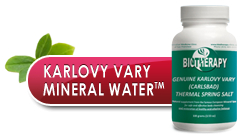By Peter Melamed, Ph.D.
The doctor’s central purpose is to alleviate the patient’s pain. In a case of chronic pancreatitis with recurrent attacks of the abdominal pain, most of the patients want pain management. By medical statistic, 70% of pancreatitis in the UA is alcoholic pancreatitis. These young or middle age alcoholics do not like to change anything in their life to alleviate chronic pancreatitis. Only severe pain pushes these individuals run to ER or PCP for help.
Unfortunately, opioids are prescribed to control the pancreatic pain too early and too often. After weeks of taking OxyContin, Codeine, Morphine, Fentanyl, Methadone, Darvocet, Norco, Dilaudid, Lortab, etc., most individuals become dependent.
The American Diagnostic and Statistical Manual of Mental Disorders for a definite diagnosis of “dependence” require three or more of the six characteristic elements being experienced or exhibited:
- Do you desire to continue taking your opioid medication?
- Do you now experience lengthy periods of usage or binge patterns?
- Do you have tremors and use substances to relieve withdrawal symptoms?
- Are you able to take more drugs without easing the pain?
- Do you neglect food, hygiene, or health care?
- Do you want to continue using the drug despite knowledge of problems caused or exacerbated by it?
Adrian Preda, MD, Health Sciences Associate Professor of Psychiatry and Human Behavior at the University of California Irvine School of Medicine, wrote in the article “Opioid Abuse” (2010).
“Opioid use and abuse have increased in the United States from the 1990’s and continuing through to at least 2010. Moreover, increased opioid abuse coincides with a controversial U.S. campaign against under treatment of pain that has caused a massive increase in opioid prescriptions” According to Adrian Preda, MD, abuse of prescription opioids has grown explosively during this time. A few statistics significantly illustrate this problem:
- Americans constitute 4.6% of the world’s population but consume approximately 80% of the world’s opioid supply.
- Americans consume 99% of the world’s supply of hydrocodone (the opioid component of Vicodin).
- Americans consume roughly two-thirds of the world’s illegal drugs.” Professor A. Preda writes,” The 2006 National Survey on Drug Use and Health (NSDUH), sponsored by the Substance Abuse and Mental Health Services Administration (SAMHSA), provides data that graphically illustrate the increase in prescription opioid abuse in the last decade:
- Between 1999 and 2006, the number of individuals 12 years of age and older illicitly using prescription pain doubled from 2.6 to 5.2 million.
- Prescription opioids have been suggested to be an important gateway drug and the fact that they are prescribed by doctors lulls users into believing they are safe.
- The great majority of illicitly used prescription opioids are obtained from 1 physician, not from drug dealers.”
Nowadays, The U.S. top federal health agency recommended medical doctors to avoid prescribing potent opiate painkillers for patients with chronic pain, saying the risks from these drugs far be more important than the benefits for most individuals. The Center for Disease Control of the U.S. in its first ever guidelines for administration the morphine-like, painkillers, such as Vicodin and OxyContin, said it took the action at March 15, 2016, to fight the nation’s deadly prescription painkiller epidemic. You may see the important video on this matter.
Continuous administration of opioids leads to physical dependence and the appearance of withdrawal symptoms during abstinence. Physical dependence is anticipated after 2-10 days of continuous use when the drug is stopped up abruptly. Withdrawal symptoms peak in 8-12 hours and end in 4-5 days. Symptoms of opioid withdrawal include the following:
- Autonomic nervous system symptoms – Diarrhea, rhinorrhea, sweating, the flow of tears, shivering, nausea, vomiting, involuntary erection or bristling with hairs (the phrase stopping “cold turkey” refers to piloerection, or “gooseflesh”)
- Central nervous system arousal – Sleeplessness, restlessness, and tremors
- Pain – Abdominal cramping, bone pains, and muscle aching
- Cravings for the medication
Effect of Opioids on the Gastrointestinal Tract
Lower Esophageal Sphincter
- Action: Spasm
- Possible Symptoms: Abdominal discomfort
Stomach
- Action: Pyloric spasms, delayed gastric emptying, reduction of gastric secretion
- Possible Symptoms: Nausea, vomiting, abdominal discomfort, gas
Gallbladder
- Action: Spasms, reduced secretion
- Possible Symptoms: Upper abdominal pain, constipation, indigestion of fat
Sphincter of Oddi
- Action: Contraction, spasms, increased pressure inside the pancreatic and bile duct
- Possible Symptoms: Upper abdominal pain, possible exacerbation of pancreatitis
Duodenum
- Action: Spasms, decreased food transition time, decreased secretion
- Possible Symptoms: Constipation, bloating, gas, cramps
Pancreas
- Action: Reduction of pancreatic secretion, spasms of pancreatic ducts
- Possible Symptoms: Possible exacerbation of pancreatitis, transient elevations in serum amylase
Colon
- Action: Spasms
- Possible Symptoms: Constipation, bloating, cramps
Opioids are not the best choices for chronic pancreatitis pain in the acidic pancreas and bile-functional stage and pancreatic deficiency-structural stage.
Doctors or health professionals that attempt to help the person with chronic pancreatitis pain have a dilemma: is the pain caused by chronic pancreatitis or is the pain caused by the withdrawal of prescribed or non-prescribed opioids? There is no simple answer to these questions. The dependent patient does not help out either.
The connection between abnormal pain sensitivity and opioid withdrawal is known. This condition is called opioid-induced hyperalgesia (OIH).
Working as MD, anesthesiologist, Peter Melamed often observed increased pain sensitivity in post-op periods in the patients had surgery anesthesia with opioids.
Regularly taking opioids for more than one month, exacerbation of pain after 4-6 hours after the last dosage of opiates and tolerance may help to make the decision. Tolerance is the need for increasing doses of medication to get the initial effect of the drug. There are some other symptoms of dependence such as bone pains, muscle aches, restlessness, sleeplessness, tremors, shivering 4-6 hours after taking the drug and certainly, the craving for the painkiller. We observed situations when discontinuing of opioids completely stopped abdominal pain and normalized the quality of life.
It may appear as a paradox, but in some cases, especially when narcotics were used for a long time, that cessation of the drugs may decrease abdominal pain
Opiate withdrawal is considered less likely to produce severe symptoms or mortality compared with barbiturates and benzodiazepines. Safe withdrawal from opioids is termed as detoxification and can be performed in the outpatient or inpatient setting. It depends upon the following: a presence of one or more additional disorders, availability of social support and polydrug abuse. Withdrawal from opioid painkillers is possible in the willing patients, and it is similar to alcohol withdrawal. More information can be found in the article Alcohol Dependency.
Accepting that an individual needs help to stop taking opioids is the most difficult step a person suffering from opioid addiction will ever face. It is the perhaps the most important step to recovery. Drug addiction is a medical condition and cannot only be treated successfully by self-control. That is why; a psychology consultation with a medical professional is necessary for the patient’s decision-making.
It is the experience of the Biotherapy Clinic that with the help of the knowledgeable professional, friend, or family member, and compliance of the patient, safe withdrawal from opioid drugs can result without serious complications in 3-5 days, even in an outpatient setting.
Pain from chronic pancreatitis is various and depending upon the stages.
- Acidic pancreas and bile-functional stage
- Pancreatic deficiency-structural stage
- Pancreatic failure
In the acidic pancreas and bile-functional stage, pain changes during the day as an occasional abdominal cramp after heavy meals or alcohol intake. Pain may last 20 minutes to four hours. It is not the time for addictive painkillers. Focusing on the root of the problem and the reasons for chronic pancreatitis may decrease pain and discomfort.
In the acidic pancreas and bile-functional stage and pancreatic deficiency-structural stage, pain may be reduced by using the combination of the non-drug methods such as
- Healing diet
- Acupuncture, electro acupuncture
- Drinking Karlovy Vary healing mineral water
- Nutritional supplements that affect the brain’s neurotransmitters
- Herbs
- Medical hypnosis
- Whole Body Cleansing through the Restoration of Friendly Intestinal Flora, Colon Hydrotherapy
- Anti-Candida Program
- Abdominal manual therapy and more
The authors emphasize the importance of drinking the healing mineral water made from the genuine Karlovy Vary thermal spring salt. This water promotes detoxification and removal the drugs from the body through the bile, large intestine and by alkalinizing urine through the kidneys.
In the pancreatic deficiency-structural stage, attacks of abdominal pain and cramps appear mostly in the epigastria and left ribcage areas. Intermittent pain may last from hours to days. Pain may be worsened by eating or drinking alcohol. The combination of the non-addictive painkillers with non-drug alternative medicine healing approaches may keep a patient in the working conditions. The broad spectrum of problems associated with chronic pancreatitis pain requires a comprehensive approach to pain and underlying processes.
In pancreatic failure stage, there is the persistent abdominal pain in the middle of the abdomen, mostly in the epigastria area with irradiation to the back. Pain is triggered by food or alcohol intake.
Pancreatic failure is often characterized by progressive worsening of exocrine and endocrine pancreatic functions that require numerous hospitalizations. Treatment of chronic pancreatitis at this stage has to involve a stepwise approach. First, the least invasive treatment options are utilized. Second, if the initial treatments are unsuccessful, then the next appropriate procedures can be used.
Even in this situation, combining the conventional methods with complementary approaches can improve the quality of life.
To obtain the benefits of the Biotherapy Clinic from healing chronic pancreatitis with pain, removing individual from alcohol and opioid painkillers, one can select the following options:
- Telephone consultation (415) 409-3939
- Office consultation

